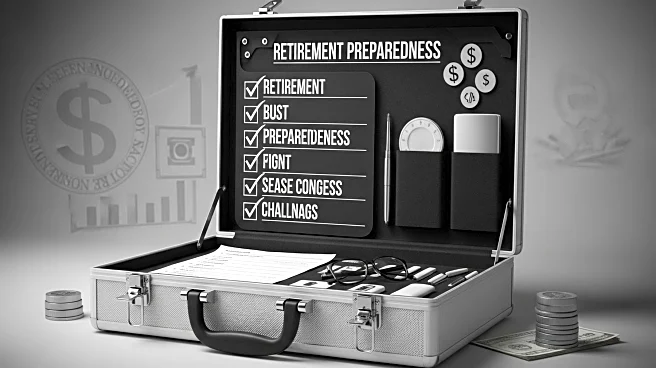What's Happening?
More than 16 million older Americans are currently facing the prospect of aging alone, with 80% of them having not planned for household or health care assistance. This demographic shift is highlighted by Mary Clements Evans, a Certified Financial Planner, who emphasizes the emotional and financial challenges of solo aging. Evans notes that societal changes, such as fewer children, increased divorce rates, and longer life expectancies, contribute to the growing number of solo retirees. She categorizes these individuals into 'haves' and 'have nots,' with the former having more options like 55-and-over communities and home retrofitting to accommodate aging needs. For those with fewer resources, continuing care retirement communities (CCRCs) are an option, though financial stability within these communities is a concern.
Why It's Important?
The trend of solo aging among older Americans has significant implications for public policy and social services. As more individuals face retirement without familial support, there is an increased reliance on government programs like Medicaid, which are already under financial strain. The potential cuts to Medicaid could exacerbate the challenges faced by nursing homes, making it difficult for them to remain operational. This situation underscores the need for policy interventions to support aging individuals, particularly those with limited financial means. Additionally, the mental health of solo retirees is a growing concern, with many experiencing depression due to isolation. This highlights the importance of community engagement and support networks to improve the quality of life for aging individuals.
What's Next?
As the number of solo retirees continues to grow, there is a pressing need for innovative solutions to support this demographic. Policymakers and community planners may need to explore new models of care and housing that cater to the unique needs of solo retirees. This could include expanding access to telehealth services, enhancing community-based support systems, and developing financial products tailored to the needs of older adults. Additionally, there may be increased advocacy for maintaining or expanding Medicaid funding to ensure that nursing homes and other care facilities can continue to operate effectively.
Beyond the Headlines
The rise of solo aging also raises ethical and cultural questions about how society values and supports its elderly population. As traditional family structures evolve, there is a need to redefine community and familial responsibilities towards older adults. This shift may lead to broader societal changes in how aging is perceived and addressed, potentially influencing future generations' approach to retirement planning and elder care.










